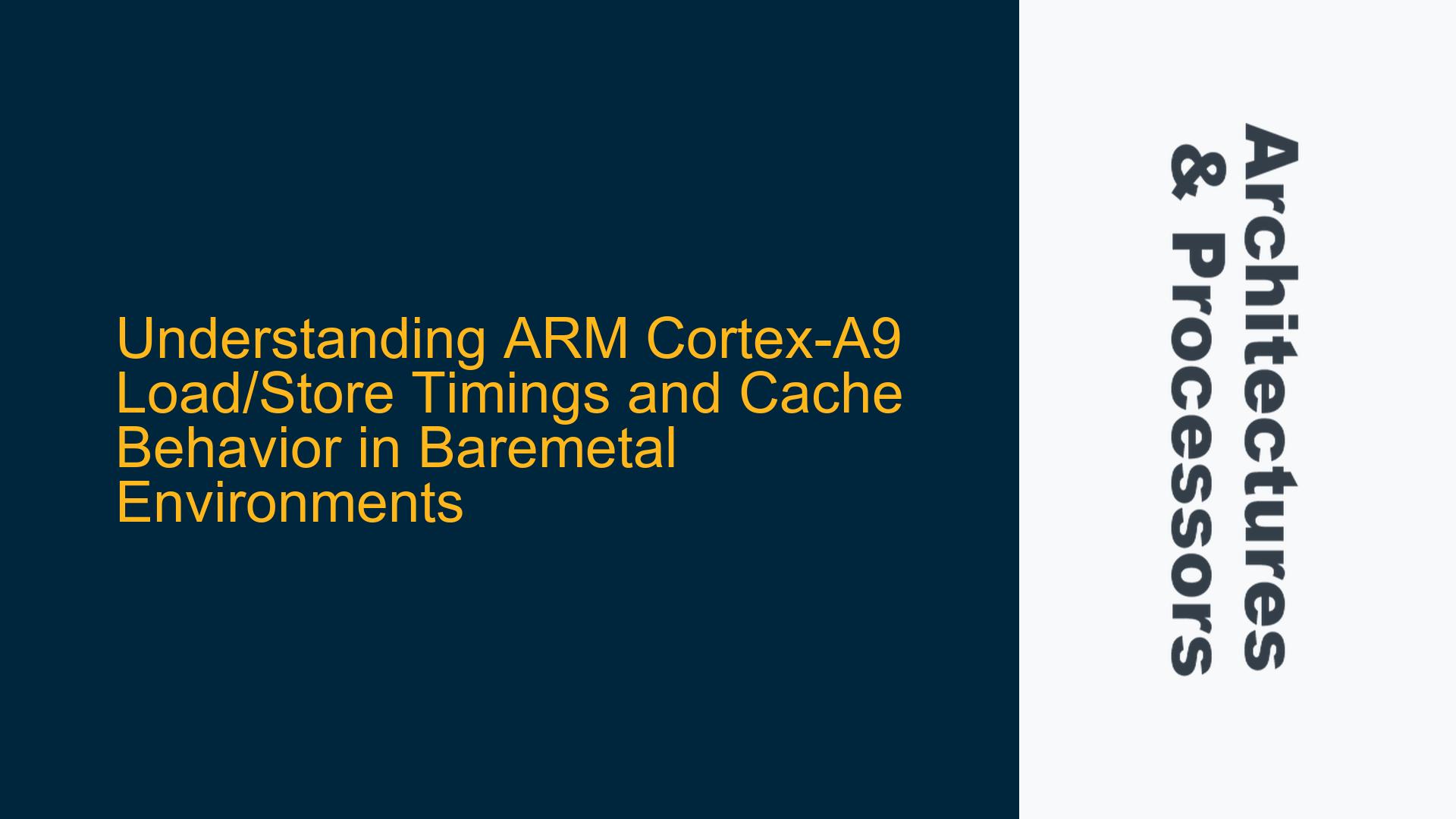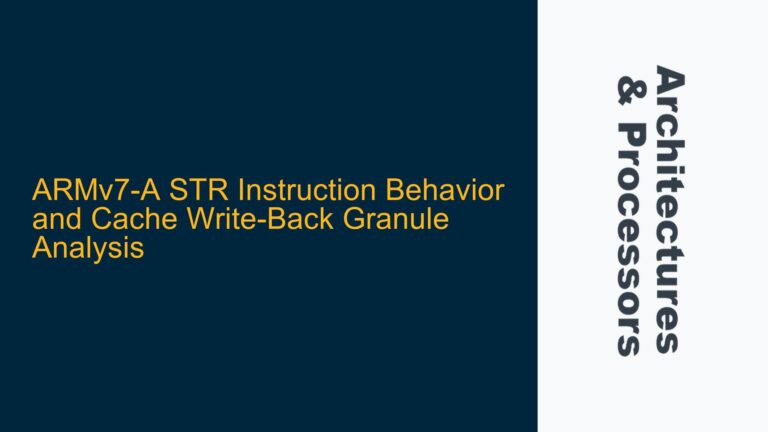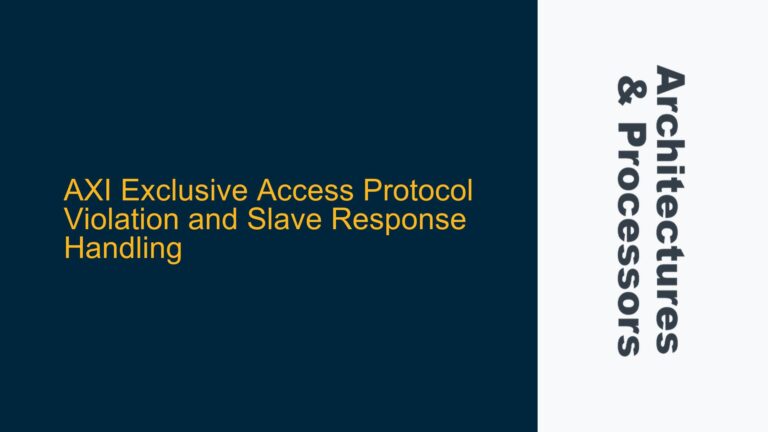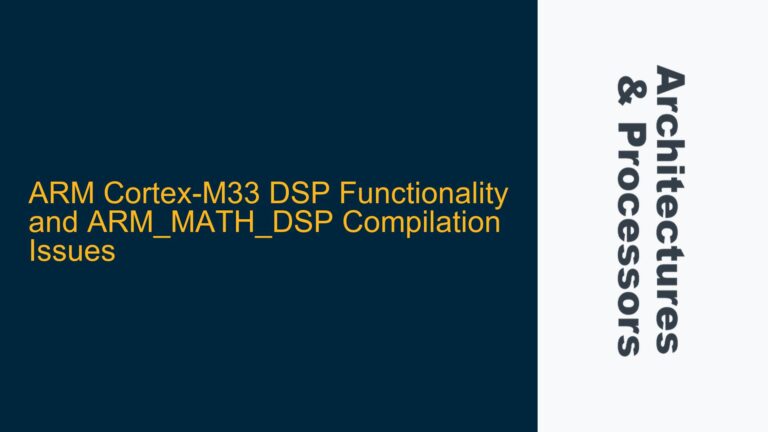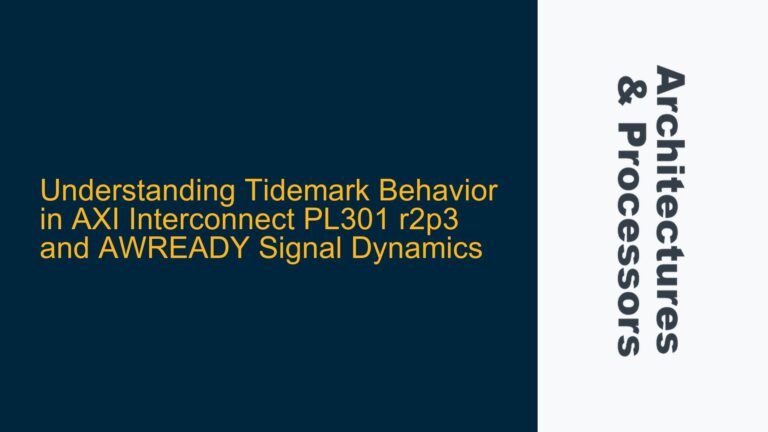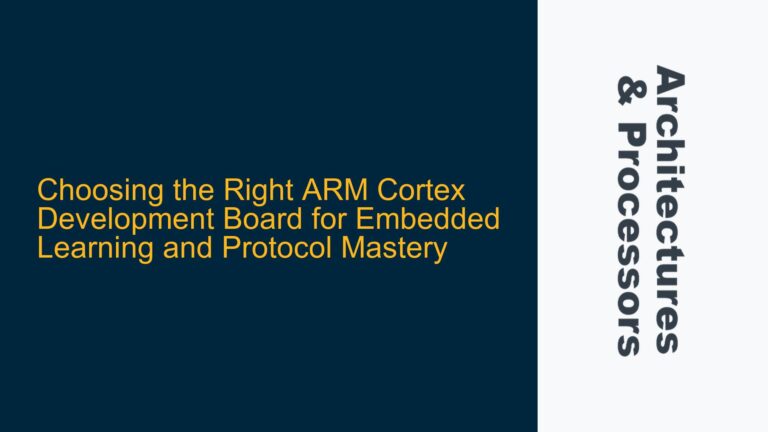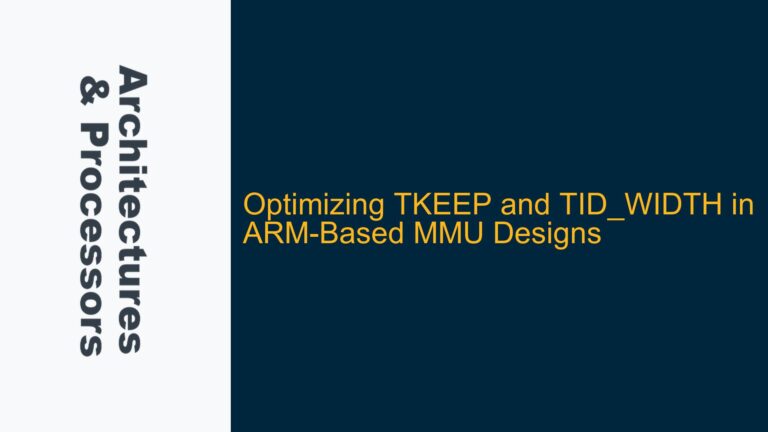ARM Cortex-A9 Load/Store Timings and Cache Behavior Analysis
When working with ARM Cortex-A9 processors in baremetal environments, understanding the timing characteristics of load and store instructions is critical for optimizing performance and diagnosing potential bottlenecks. The Cortex-A9, a popular processor in embedded systems, features a dual-issue superscalar architecture with L1 and L2 caches, which significantly impacts memory access latencies. However, measuring these latencies accurately, especially in the context of cache hits and misses, can be challenging due to the invasive nature of debugging tools and the complex interactions between the pipeline, caches, and memory subsystems.
In this analysis, we will explore the observed behavior of load and store instructions under different cache configurations, the potential causes of unexpected timing results, and the methodologies to accurately measure and interpret these timings. The goal is to provide a comprehensive understanding of how cache states influence instruction execution times and how to effectively troubleshoot discrepancies in timing measurements.
Pipeline Flushing and Debugger-Induced Timing Artifacts
One of the primary challenges in measuring load and store timings on the Cortex-A9 is the impact of debugging tools on the processor’s pipeline. When using tools like OpenOCD to step through instructions, the pipeline is often flushed, leading to artificially inflated cycle counts. This behavior is particularly problematic when trying to measure the latency of individual instructions, as the pipeline flush can mask the true execution time of the instruction being measured.
For example, in the observed data, load and store instructions consistently took around 14 cycles when measured using OpenOCD. This value is significantly higher than the expected latency for an L1 cache hit, which is typically in the range of 1-3 cycles. The discrepancy arises because stepping through the program with a debugger forces the pipeline to clear, adding overhead to each instruction’s execution time. This overhead can obscure the actual cache behavior, making it difficult to distinguish between L1 cache hits and misses.
To mitigate this issue, it is essential to measure timing blocks of instructions rather than individual instructions. By measuring the execution time of a sequence of instructions, the impact of pipeline flushes can be averaged out, providing a more accurate representation of the cache behavior. Additionally, using hardware performance counters (PMU) to measure execution times without halting the processor can reduce the invasiveness of the measurement process.
Cache Hierarchy and Latency Characteristics
The Cortex-A9 features a two-level cache hierarchy, with separate L1 instruction and data caches and a unified L2 cache. The latency characteristics of these caches play a significant role in determining the overall performance of load and store operations. Understanding these latencies is crucial for interpreting timing measurements and diagnosing performance issues.
When all caches are enabled, the majority of load and store operations should result in L1 cache hits, with latencies in the range of 1-3 cycles. However, as observed in the data, the measured latencies were around 14 cycles, which is more consistent with an L2 cache hit or even a main memory access. This suggests that the L1 cache may not be functioning as expected, or that the measurement methodology is introducing artifacts that distort the results.
Disabling the L1 caches and relying solely on the L2 cache should result in higher latencies, typically in the range of 20-40 cycles for an L2 cache hit. However, the data shows that a significant number of accesses still exhibit latencies around 14 cycles, even with the L1 caches disabled. This behavior is unexpected and indicates that there may be other factors at play, such as cache prefetching, branch prediction, or memory controller behavior.
To accurately diagnose the cache behavior, it is necessary to disable features like prefetching and branch speculation, as these can influence the timing measurements. Additionally, examining the cache configuration registers and ensuring that the caches are properly initialized and configured is essential. The Cortex-A9 Technical Reference Manual provides detailed information on cache configuration and control, which can be used to verify the cache settings and identify potential misconfigurations.
Leveraging Performance Monitoring Units (PMU) for Accurate Timing Measurements
The Cortex-A9 includes a Performance Monitoring Unit (PMU) that can be used to measure various performance metrics, including cache hits, misses, and execution times. The PMU provides a non-invasive way to collect timing data without disrupting the processor’s pipeline, making it an invaluable tool for performance analysis.
To use the PMU effectively, it is important to configure the performance counters to track the relevant events, such as L1 and L2 cache accesses, hits, and misses. By correlating these events with the execution time of specific code blocks, it is possible to gain insights into the cache behavior and identify performance bottlenecks.
For example, configuring the PMU to count L1 data cache misses and measuring the execution time of a load instruction can help determine whether the instruction resulted in an L1 cache hit or miss. Similarly, tracking L2 cache accesses can provide information on the latency of memory accesses when the L1 cache is disabled.
In addition to the PMU, the Level 2 Cache Controller (L2C-310) provides additional counters that can be used to monitor L2 cache behavior. These counters can be accessed through the L2C-310 registers and provide detailed information on cache hits, misses, and other performance metrics. By combining the data from the PMU and the L2C-310 counters, it is possible to build a comprehensive picture of the cache behavior and identify any anomalies.
Practical Steps for Troubleshooting Cache and Timing Issues
To effectively troubleshoot cache and timing issues on the Cortex-A9, the following steps should be taken:
-
Verify Cache Configuration: Ensure that the L1 and L2 caches are properly configured and enabled. Check the cache configuration registers to confirm that the caches are operating as expected. Disable features like prefetching and branch speculation to eliminate potential sources of interference.
-
Measure Timing Blocks: Instead of measuring individual instructions, measure the execution time of blocks of instructions. This approach reduces the impact of pipeline flushes and provides a more accurate representation of the cache behavior. Use the PMU to measure the execution time of these blocks and correlate the results with cache events.
-
Use PMU Counters: Configure the PMU to track relevant performance metrics, such as L1 and L2 cache hits and misses. Use these counters to gain insights into the cache behavior and identify performance bottlenecks. Combine the PMU data with L2C-310 counters for a more comprehensive analysis.
-
Analyze Cache State: Use the PMU and L2C-310 counters to monitor the cache state during program execution. Track the cache hits and misses for load and store instructions to determine whether the cache is functioning as expected. Compare the observed behavior with the expected latencies for L1 and L2 cache accesses.
-
Optimize Cache Usage: Based on the analysis, optimize the cache usage to minimize misses and reduce latency. This may involve adjusting the cache configuration, modifying the memory access patterns, or using cache control instructions to manage the cache state.
By following these steps, it is possible to accurately measure and interpret the timing characteristics of load and store instructions on the Cortex-A9, diagnose cache-related performance issues, and optimize the system for maximum performance.
Conclusion
Understanding the timing characteristics of load and store instructions on the ARM Cortex-A9 requires a deep understanding of the processor’s pipeline, cache hierarchy, and performance monitoring capabilities. The invasive nature of debugging tools like OpenOCD can introduce artifacts that distort timing measurements, making it essential to use non-invasive techniques like PMU counters to collect accurate data. By carefully analyzing the cache behavior and optimizing the cache usage, it is possible to achieve significant performance improvements in baremetal environments.
